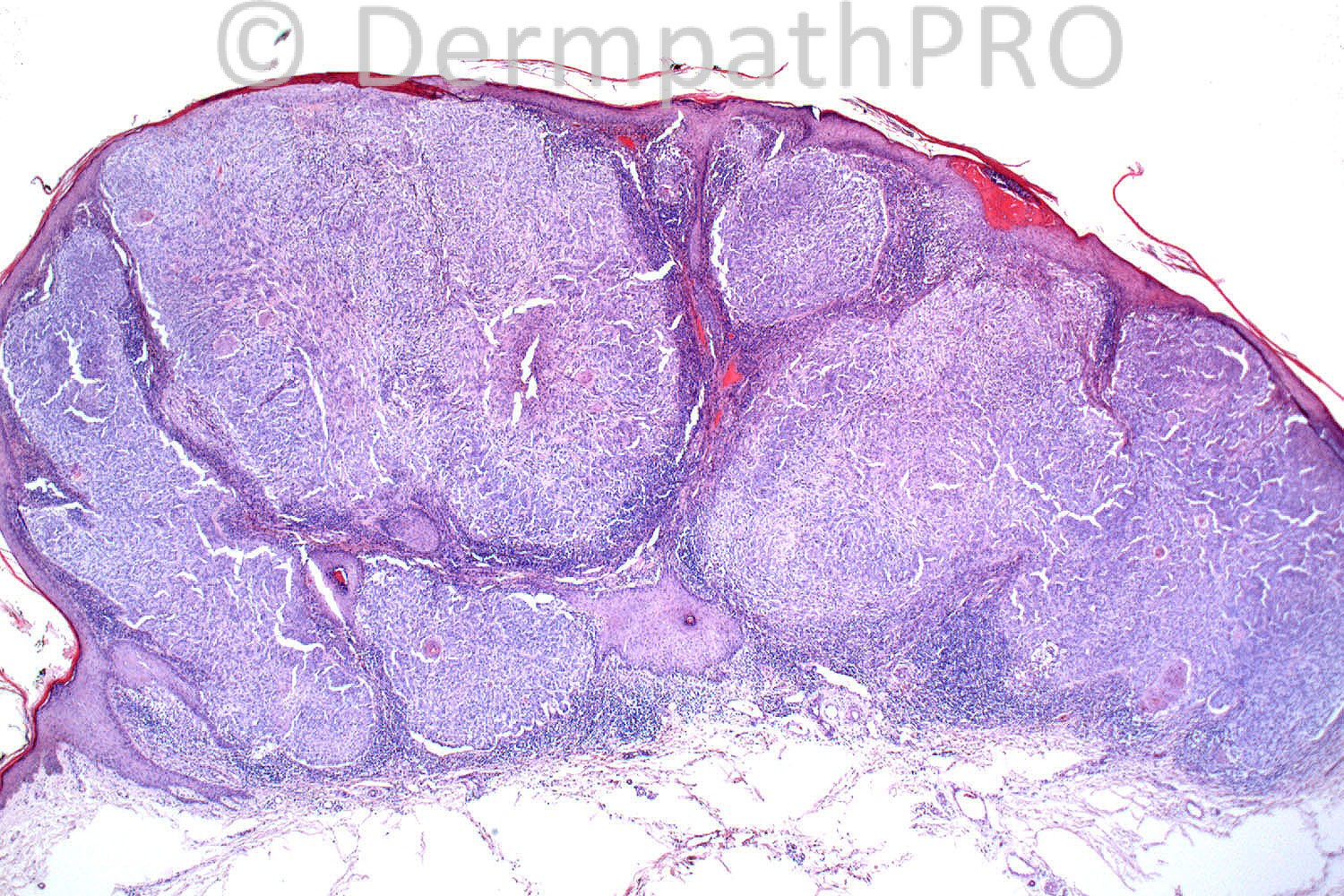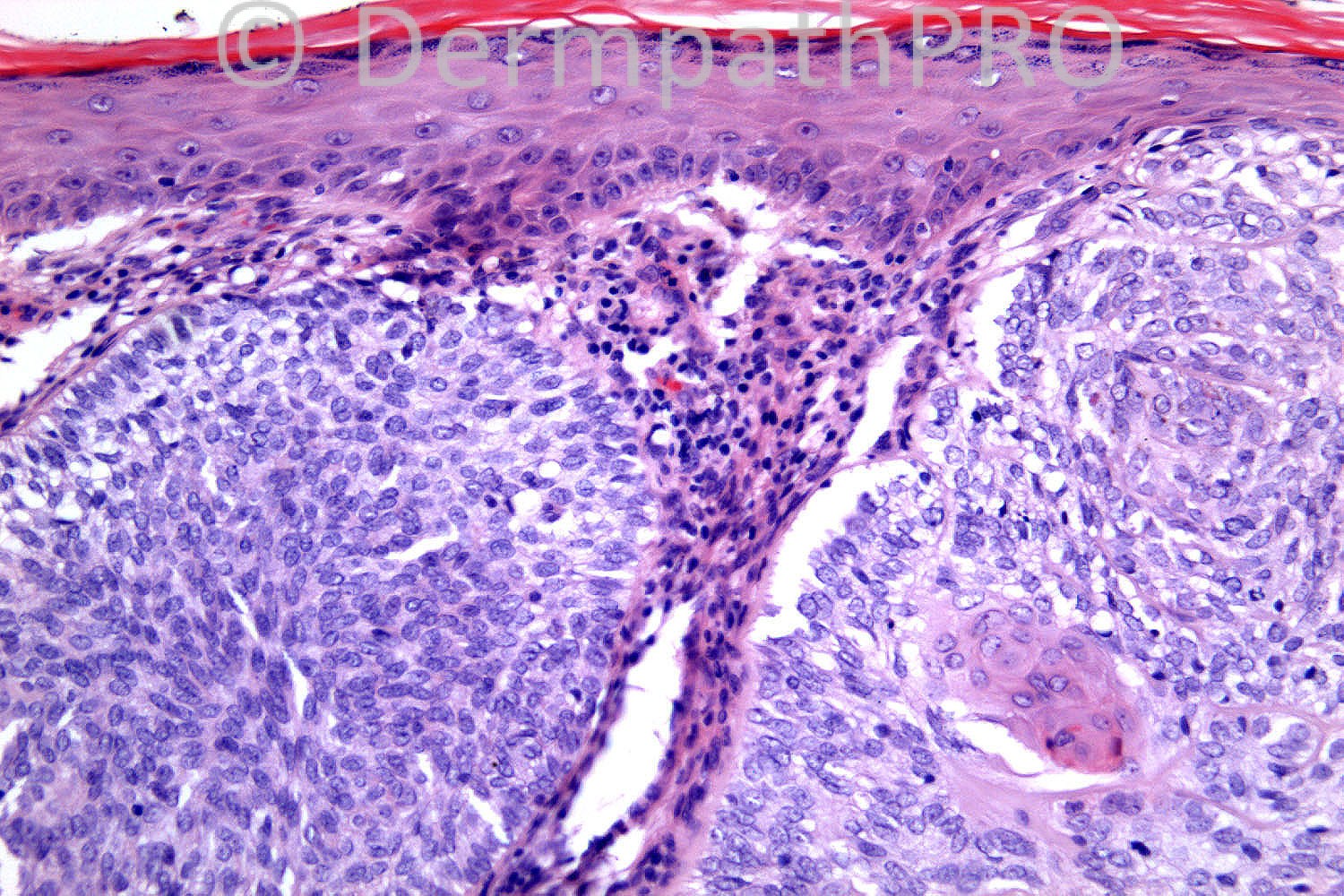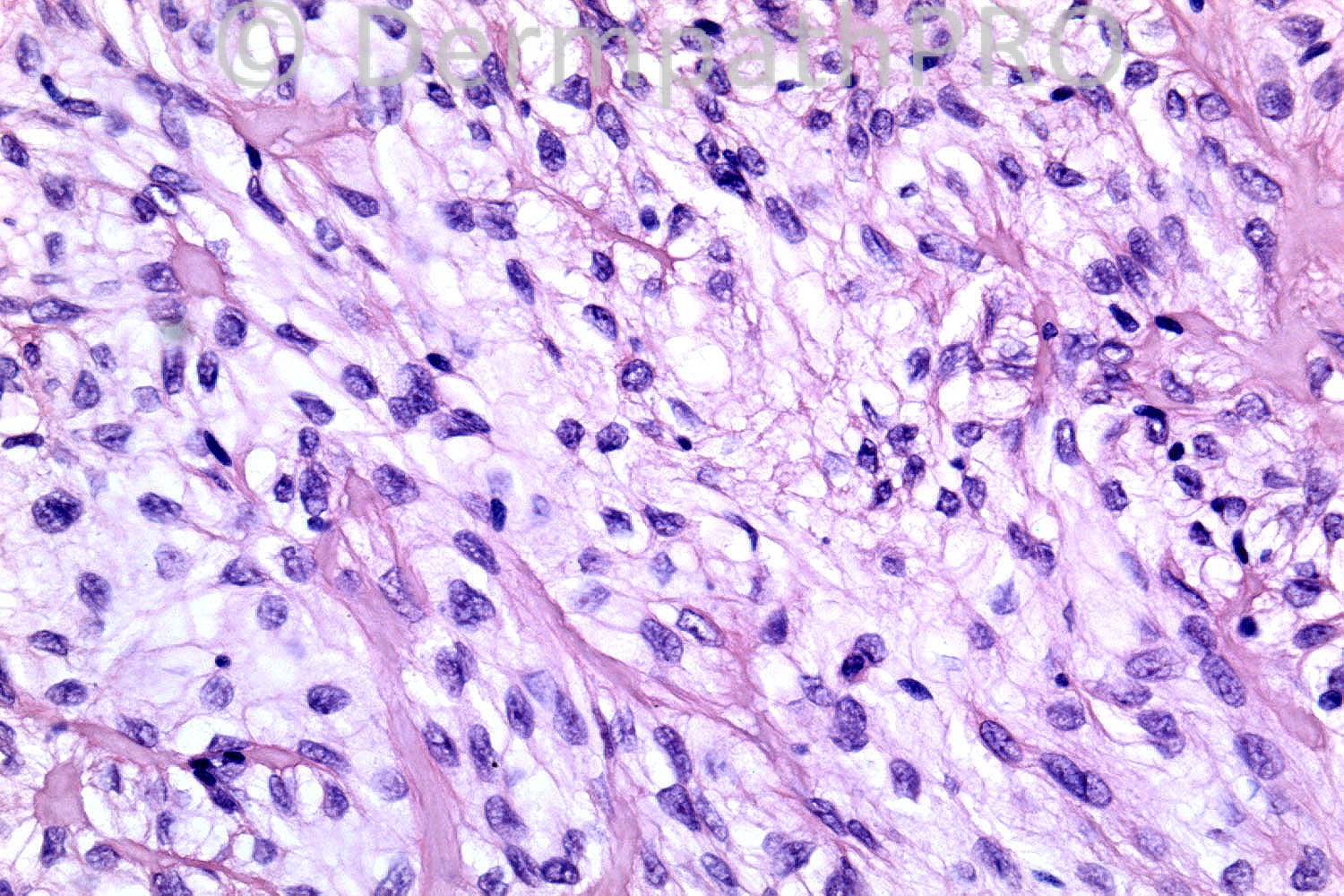Case Number : Case 717 - 15 Mar Posted By: Guest
Please read the clinical history and view the images by clicking on them before you proffer your diagnosis.
Submitted Date :
64 years-old female. Lateral thigh. Increased size over one year. Pigmented. Amelanotic melanoma? Clear cell acanthoma? Pyogenic granuloma?
Case posted by Dr. Richard Carr
Case posted by Dr. Richard Carr





User Feedback